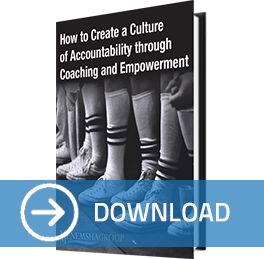1 min read
Most Staffing Firms are Not Built to Scale, But to Survive
Most staffing firms don’t struggle to scale because their teams aren’t working hard. They struggle because they don’t have a real go-to-market...

For IT staffing organizations, high recruiter and sales rep turnover isn’t just disruptive—it can be financially devastating and demoralizing. According to a DePaul University study, the average turnover cost per sales rep is $97,690 when you add up recruiting costs, training costs, and lost sales. Let that sink in for a second. If you have a sales and/or recruiting team that churns through five employees in a year, you’ve just let nearly $500,000 go down the drain! To make matters worse, it takes 4 months on average to replace a new sales rep or recruiter. Add on several more months before they are operating at the proficiency of a tenured sales rep or recruiter meeting quota.
This is especially alarming when you consider that most sales reps—no matter how happy or successful they are—typically have one foot out the door at all times. A Glassdoor survey found that only 19% of sales reps have no immediate plans to leave their companies. However, 68% plan to look for a new job within the next year, and 45% of sales reps plan to look for a new job within the next three months. There are few professions more transient than sales.
So why do recruiters and salespeople change teams so often? And what can your IT staffing organization do to reduce employee turnover and stop your top performers from leaving? Here are four ways to reduce employee turnover. But first, let’s first explore why reps and recruiters-especially top performers- leave their employer.
Living under the burden of high expectations and non-stop pressure to produce day in and day out combined with the lure of a better situation elsewhere make it difficult for most sellers and recruiters to stay in one place. Limited career growth opportunities and job boredom are other leading causes of employee turnover for top performers. The  constant focus on performance leaves no time for professional growth and development which leaves IT staffing firms struggling to retain employees and create career paths. To take it a step further, most front line staffing and recruiting managers have little or even no experience or professional training in employee development. Having worked as a recruiter or sales rep before being promoted, their singular focus has always been on “making their number.” I’ve worked with hundreds of sales managers and recruiting managers in the staffing industry and what I see is a real epidemic; front line managers need the skills and tools to properly coach and develop their people to increase their value to the organization and create career paths.
constant focus on performance leaves no time for professional growth and development which leaves IT staffing firms struggling to retain employees and create career paths. To take it a step further, most front line staffing and recruiting managers have little or even no experience or professional training in employee development. Having worked as a recruiter or sales rep before being promoted, their singular focus has always been on “making their number.” I’ve worked with hundreds of sales managers and recruiting managers in the staffing industry and what I see is a real epidemic; front line managers need the skills and tools to properly coach and develop their people to increase their value to the organization and create career paths.
Poor sales culture drives top talent away more than anything else. High performers want to work with other high performers and they want to be held accountable to high standards. High performers tend to leave their employer when they lose belief in their sales leader and in their company’s ability to execute effectively (AKA, salespeople not believing in their delivery team and/or vice versa). This is a management issue and not the fault of the employee.
It also doesn’t take a Harvard MBA to know that top performers will only tolerate so many distractions such as office politics or back-channel communications before they mentally check out and decide to move on. Nothing turns off a high performer more than office bureaucracy. They detest internal politics and unnecessary meetings where the same topics are discussed repeatedly without any decisions. Does this sound like your culture?
Finally, many recruiting and sales managers often make the mistake of over-relying on compensation as the only means for retaining their top performers. Money is a weak substitute for effective leadership, professional development and a compelling career path. Compensation doesn’t address deeper needs such as personal fulfillment and job satisfaction.
Create Challenges & Opportunities For Your High Performers
To prevent employees from getting antsy and walking out the door, IT staffing firms should provide challenges beyond their normal day-to-day responsibilities or simply increasing their sales quota. High performers want and need fresh challenges. Give them special projects that provide the opportunity to expand their knowledge and comfort zone. For example, as national sales manager at Kelly IT my VP tasked me with providing sales training for our entire sales organization, all 23 offices. Part of the program I developed included me partnering with our internal IT department to deliver technology training. Not only was the opportunity fun and rewarding but it afforded me the opportunity to develop relationships with people in the organization that I probably wouldn’t have ever met otherwise. In another role I appointed a few of my high performers to lead a sales advisory board where they informed the leadership team on market trends and the needs of the salesforce. This made them feel part of something bigger than their regular job. They had a seat at the table with executive leadership. They were afforded the opportunity to contribute to the direction of the company beyond their day to day job responsibilities. Just as importantly, it contributed to their professional development.
Are Your Employees Engaged?
According to a Corporate Executive Board study, employees with lower engagement are four times more likely to leave their jobs than those who are highly engaged. Employee engagement means your employees have an emotional connection to your organization and their work which compels them to contribute additional discretionary effort. This drives employee retention and produces higher rates of productivity including higher customer satisfaction. Keep in mind that a big part of employee engagement is tied to the relationships front line sales managers and recruiting managers foster with their people.
Coach More and Manage Less
For most sales managers and recruiting managers, the 1:1 meeting is all about the numbers and sales activity. But you can’t expect your employees to develop team or company loyalty and be truly engaged if all you care about is their activity and numbers. This is where coaching comes in. Coaching is about tapping into the DNA of an individual and seeking to understand their viewpoint, motivation, goals, aspirations, skill sets and  way of thinking through the use of open-ended questions. Coaching is ongoing and highly customized to the individual and is about challenging, encouraging, supporting and empowering people to achieve higher levels of performance. Coaching is about career development and increasing the employee’s overall value. Unfortunately, I believe this is the skill that many front line managers are lacking for the reasons mentioned previously. To effectively engage employees and build team loyalty, managers must have the skills, tools and knowledge to provide effective coaching.
way of thinking through the use of open-ended questions. Coaching is ongoing and highly customized to the individual and is about challenging, encouraging, supporting and empowering people to achieve higher levels of performance. Coaching is about career development and increasing the employee’s overall value. Unfortunately, I believe this is the skill that many front line managers are lacking for the reasons mentioned previously. To effectively engage employees and build team loyalty, managers must have the skills, tools and knowledge to provide effective coaching.
Start Treating & Measuring Employee Onboarding as a Revenue Generating Activity
The financial impact of having to fire under performing recruiters and sales reps shouldn’t be ignored. According to the aforementioned DePaul University study, involuntary terminations make up 33% of sales rep turnover. When sales managers simply write off those recruiters or sales reps as “bad hires,” but continue to hire, onboard and train employees the same way—they’re doomed to repeat their mistakes over and over again. I see this time and time again with staffing firms.
Good recruiters and salespeople will leave companies if they feel they’re failing and don’t see a path for success. If you know that you don’t have a formal, structured training and onboarding program and that it contains some “gaps,” than in all likelihood your new hires are going to recognize that as well and decide to move on to a new company where they can get the training they need to be successful.

1 min read
Most staffing firms don’t struggle to scale because their teams aren’t working hard. They struggle because they don’t have a real go-to-market...

In my previous post, How to Prevent Unexpected Contract Terminations, I shared how systemizing consultant and client check-ins at key milestones...

About a year ago, I was serving as the fractional revenue leader, managing sales and recruiting for a client.